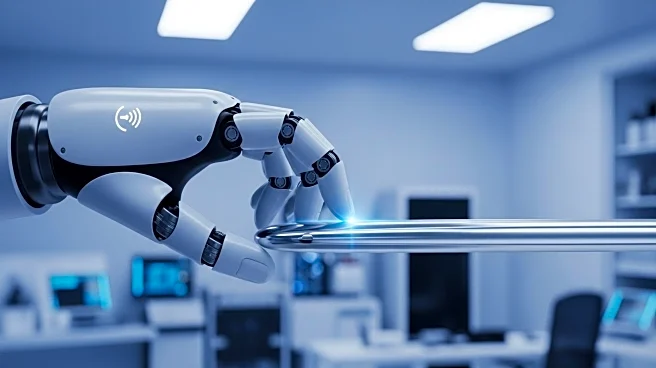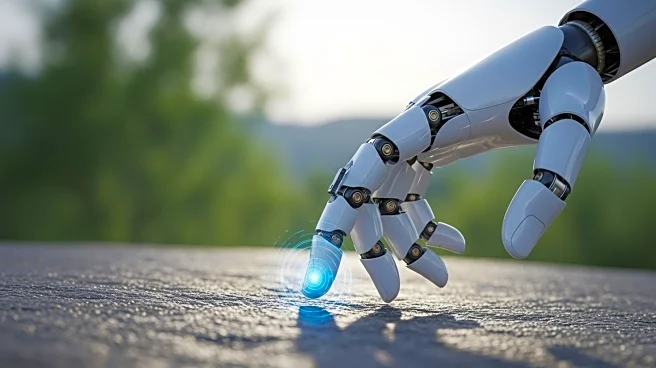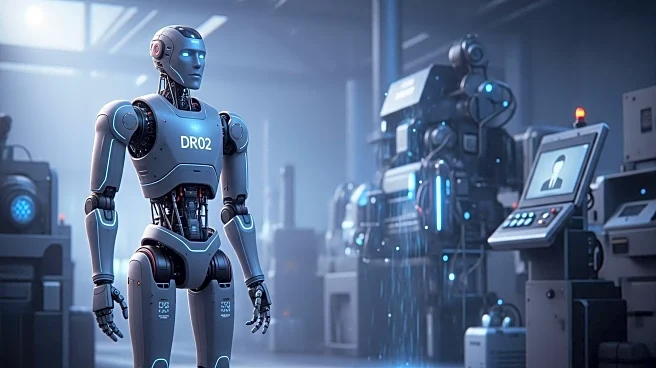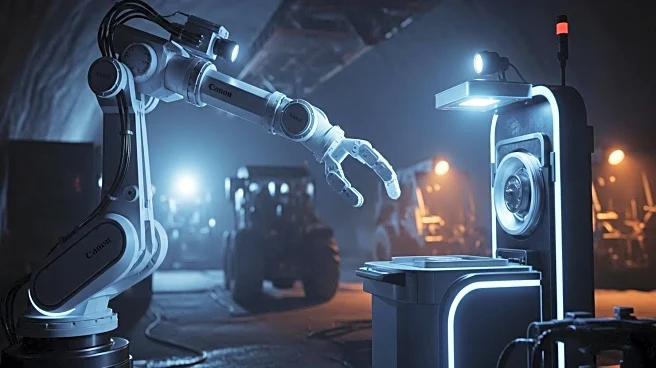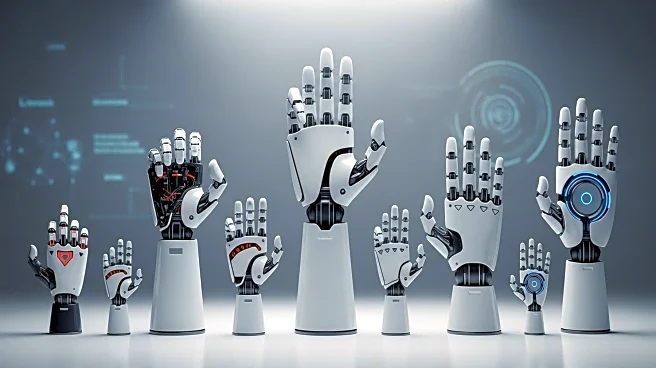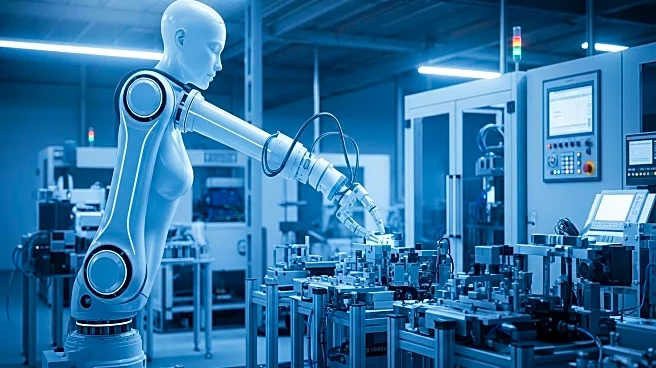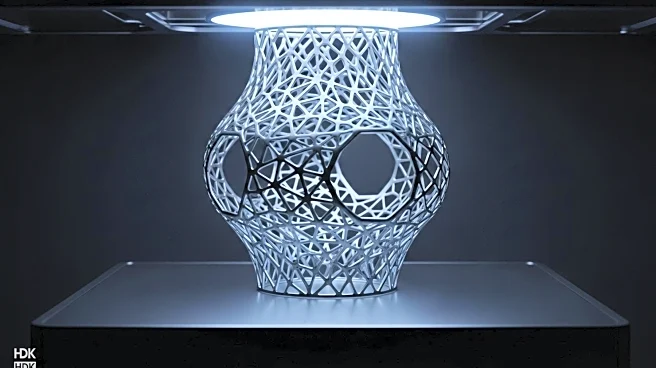What's Happening?
Researchers have developed the DENSE protocol, a novel method for collecting tactile data to improve slip detection in robotic grasping. The protocol involves generating diverse grasp poses, executing robotic grasps, and labeling data for slip events. Using the EZGripper and uSkin tactile sensor, the protocol aims to enhance the variability and accuracy of tactile datasets, improving the performance of slip detection models. The approach has shown significant improvements in generalization capabilities compared to traditional methods.
Why It's Important?
The DENSE protocol represents a significant advancement in robotic grasping technology, addressing challenges in tactile data collection and slip detection. By improving the accuracy and variability of datasets, the protocol enhances the reliability of robotic systems in handling objects, which is crucial for applications in manufacturing, logistics, and service industries. This development could lead to more efficient and adaptable robotic systems, reducing errors and increasing productivity.
Beyond the Headlines
The protocol's emphasis on variability and precision highlights the importance of data-driven approaches in robotics. As AI and machine learning continue to evolve, the integration of advanced tactile sensors and data collection methods will be key to developing intelligent robotic systems. This shift towards more sophisticated data handling could redefine the capabilities of robots, enabling them to perform complex tasks with greater autonomy.
